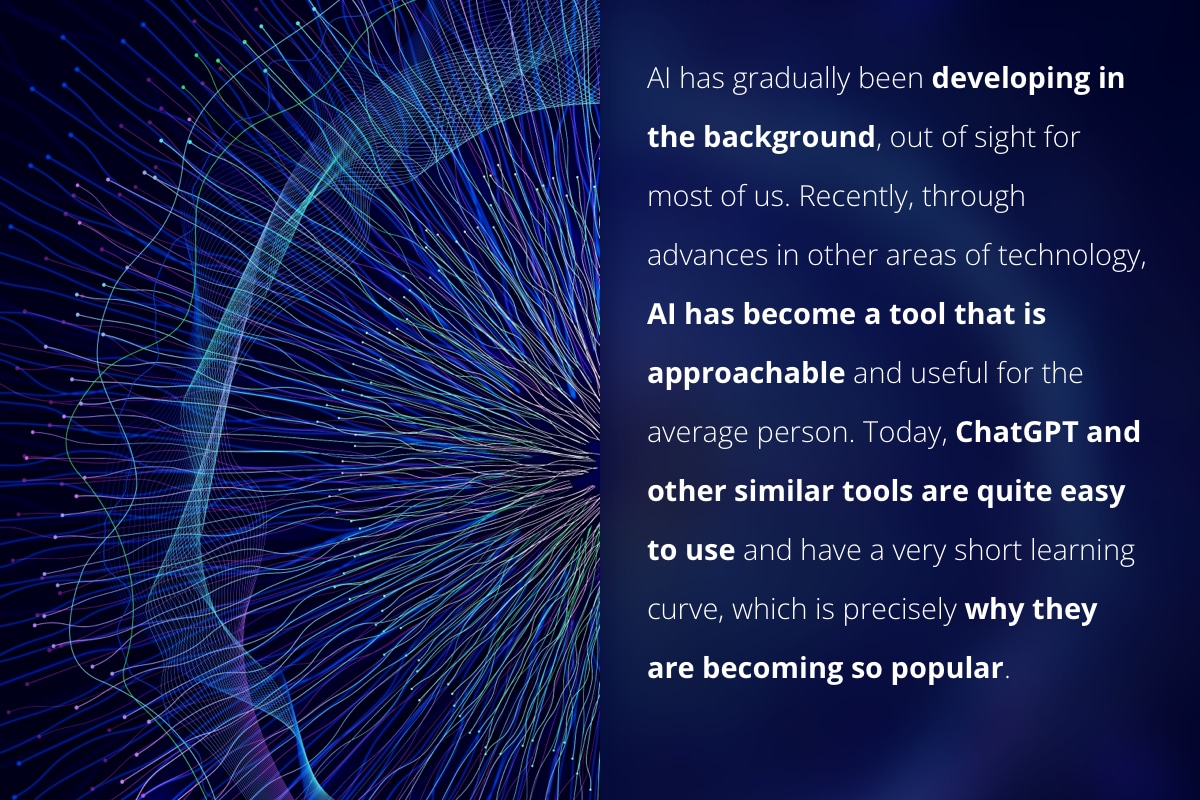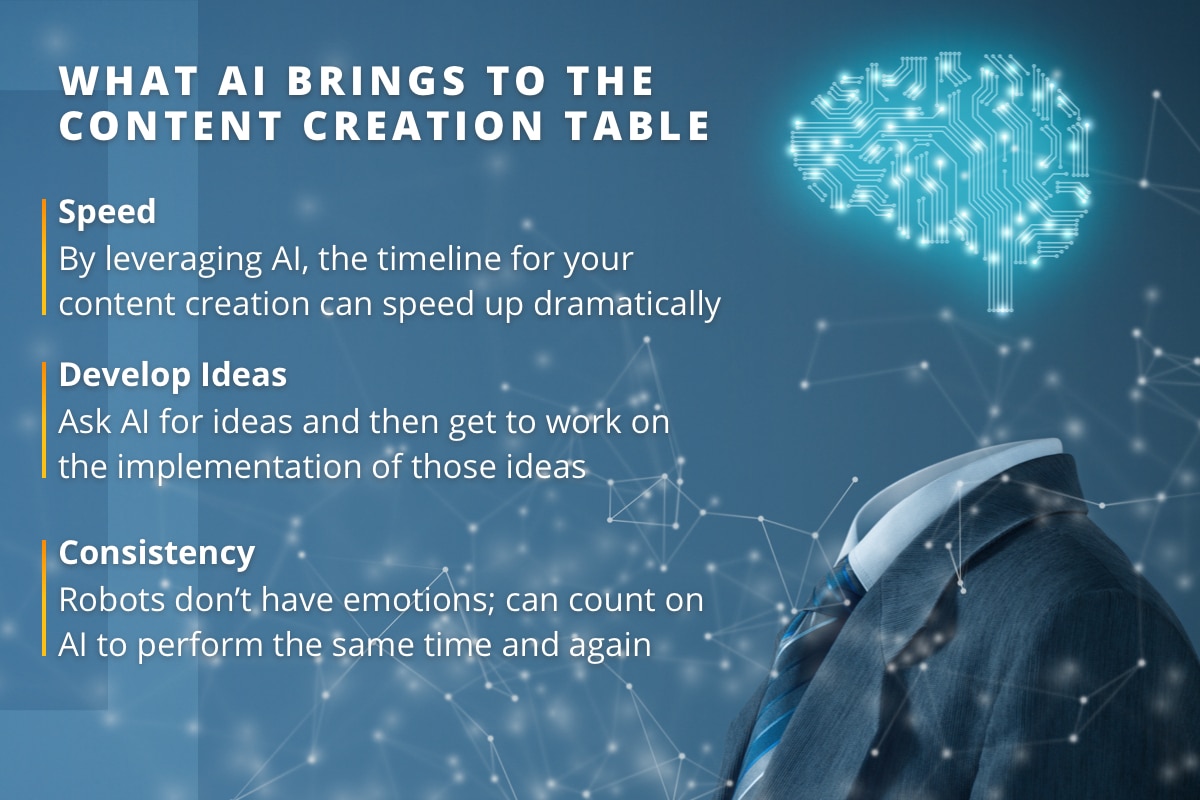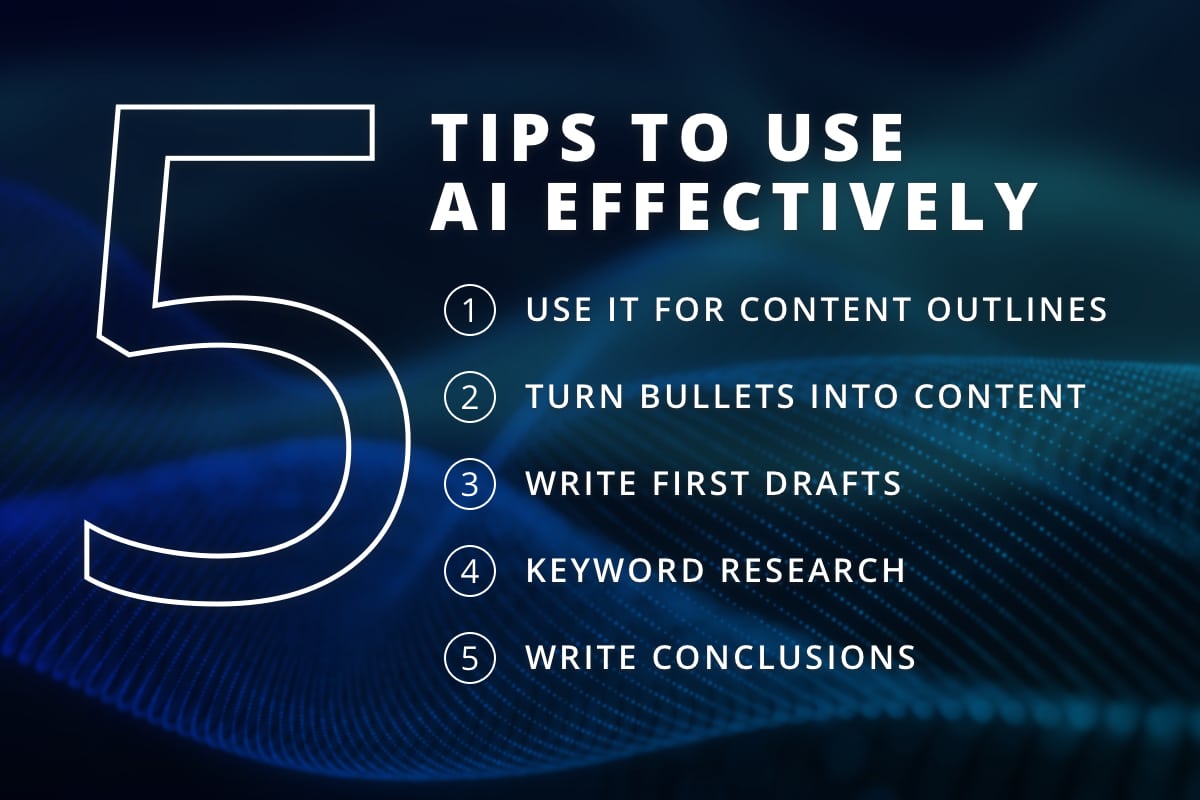
While it is yet to be seen exactly how artificial intelligence tools like ChatGPT change the digital landscape, we can say one thing for certain – people have a lot of strong opinions about this type of technology. Depending on who you talk to, ChatGPT is either the most incredible tool ever created by mankind – or the end of the world as we know it. Discussions on this topic often leave no room for a reasonable middle ground, and that’s really what we’re after here.
Let’s look at ChatGPT and similar tools from the perspective of content creation and how they might be used to improve your process and performance without completely losing any sense of authenticity. Whether you are already using AI in your daily process or you have been waiting to decide if you are going to dive in, this article should be helpful. Let’s get started!
Where Did ChatGPT Come From?
If you don’t pay close attention to the cutting edge of various technological fields, like most of us don’t, it can seem like the tech world changes incredibly quickly. One day, AI seems like a futuristic concept that is far removed from something that will impact your day-to-day life. Then, seemingly the next day, everyone is talking about ChatGPT and how it could steal all of our jobs and take over the world. What happened?
In reality, of course, things play out a bit differently. This technology has gradually been developing in the background, out of sight for most of us. Recently, through advances in other areas of technology, AI has become a tool that is approachable and useful for the average person. The tipping point is when advanced knowledge and experience with a system is no longer needed for it to be useful. Today, ChatGPT and other similar tools are quite easy to use and have a very short learning curve, which is precisely why they are becoming so popular.

What AI Technology Brings to the Content Creation Table
Before we get into some tips that can be used to effectively leverage AI for content creation, it’s important to think about why we would want to do that in the first place. What can AI do in this realm that is hard to replicate with humans? After all, if there aren’t many advantages to note, you may not want to bother at all.
Fortunately, AI does quite well with content creation, when leveraged correctly. Here are some of the benefits you might enjoy when you learn how to use these tools:

- Speed. This is the star of the show, as you probably aren’t surprised to learn. The primary reason that people consider using AI tools for content creation is the speed with which these tools can turn out articles, product pages, landing pages, and much more. Often, it’s the production capacity of humans that turns out to be the bottleneck for companies that are serious about digital marketing. Even with a team of talented humans that are capable of doing great work, there are only so many hours in the day and only so many things those humans can do in a given time frame. By leveraging AI, the timeline for your content creation can speed up dramatically, and that acceleration could potentially mean big things for your business.
- Develop ideas. Sometimes, writer’s block gets in the way of good content production, as you or your team might wind up wasting hours just staring at the blinking cursor on your screen, wondering what to write. That’s a problem you can get around with the help of AI, as you can ask it for ideas and then get to work on the implementation of those ideas. Most likely, it will be a blend of your own ideas and those generated by artificial intelligence that winds up framing your content and giving it a purpose on your site.
- Be consistent. Do you find that the quality of your content goes up and down from one week to the next – or even from day to day? That’s natural, as humans go through ups and downs in life, and the work they produce can mirror those changing emotions. Robots don’t have emotions, of course, and you can count on AI to perform the same time and again, based on the inputs you provide to it. This might cut down on the amount of time you have to spend editing your content and it should raise the bar overall on what you publish.
Speed, ideas, and consistency are not all that AI will bring to the content table, but they are important advantages. If it is used correctly, you could reach new heights in content creation by using AI, but as we’ll highlight in the next section, it’s also possible for this plan to go wrong.
Potential for Problems with Artificial Intelligence
For as many success stories as there are around the web regarding productive, incredible uses for AI, there are also quite a few stories of failure. Nothing is perfect, and you might find that your first attempts to use AI to produce content don’t quite live up to your expectations. Here are some of the problems that might be encountered along the way:
- Getting things wrong. This is perhaps the biggest risk of all when it comes to the use of AI. If you want to be seen as an authority in your space, or even if you just want to make sure what you present to your audience is accurate, AI does introduce another variable into the content creation process. Even advanced AI tools aren’t correct 100% of the time, as they can present things in a confusing manner, or even just get them wrong. Of course, humans get things wrong too, but an individual who is experienced in a given field may be able to avoid a basic error that an AI tool could make.
- Sounding robotic. Often, AI-written content doesn’t sound like it was written by a person – because it wasn’t. That doesn’t mean that the writing is bad, as it will probably pass any grammar checks you might do, and it will be technically correct. But there is something about the personality and tone that a human can inject into the written word that is going to be difficult for any AI tool to replicate. You might be able to produce a massive quantity of content using AI, but if it sounds hollow and doesn’t connect to your audience, it won’t be worth much in the end.
- An impression of plagiarism. The work that AI tools do under the hood is quite complicated and technical, but on a basic level, they use immense volumes of writing from existing sources to learn how language works and what words follow other words. So, if you provide a prompt to an AI tool and it produces “original” content, that content is likely to draw heavily on existing sources in your niche. While you won’t technically be copying what others have written, you will be leveraging their work through the use of an AI tool.
Five Tips to Use AI Effectively When Creating Content
If you are ready to jump in and see how an AI tool can work for you, we’d like to offer up some tips to help you hit the ground running. Even with these tips, expect there to be a learning curve involved as you get comfortable writing prompts that will produce the results you desire.

- Use it for content outlines. At this point in the development of AI tools, this might be the best available use for content creators. By asking a tool like ChatGPT to write a detailed outline on a topic that you want to cover in a blog post, you can quickly get a structure for your article and start writing almost immediately. This use cuts down dramatically on how much time you have to invest to plan out your writing and create the right structure.
- Topic generation. A well thought-out content calendar is the key to a successful blog strategy. But it can be a challenge to come up with dozens of topics when planning for a full year ahead. By writing the right prompts, you can ask ChatGPT to generate topic ideas. The list likely won’t be exactly what you’re looking for, but it’s a great starting point to get your wheels turning.
- Turn bullets into content. With some types of content, AI is great at converting a source of data into a well-written, informative page. A good example of this function is seen with a bio page. If you have a list of 10 bullet points that cover the basics of an individual on your team, or even a client that you want to feature, you can submit that list to the AI tool with a request for it to write a bio page or about page. You will likely be quite impressed with the output and the AI-written page should only need minimal editing before it’s ready to go.
- Write first drafts. You might not want to directly publish the content that is produced by an AI tool, but you can use it in many niches to write first drafts. Write a prompt that includes as much detail as possible about what you want the finished product to look like, and you should get something that is pretty close to the target. Then, in your content production process, include a step where a writer or editor takes what the AI wrote and injects some personality, checks the facts, and polishes up the piece for publication.
- Keyword research. Although you might already have a keyword research tool you are using in your process, AI tools can stand in and do an acceptable job if needed. Try creating a prompt that asks what keywords you should be targeting on your website given your niche and target audience, and cross-check that list it provides against what you already target on your site. This quick method is likely to produce new ideas for keywords and pages you could create around them.
- Write conclusions. If you already publish a lot of content, trimming up your process to save a few minutes here and there can add up significantly. One example of this approach is to use AI to write the conclusions to all of your articles. Just enter what you have written for the body of the article and ask the tool to write a conclusion that wraps things up and summarizes what you said.
Should you get into the world of AI-assisted content development? There is certainly plenty of potential here, but that choice is yours to make in the end. If you are already happy with your content production process, you might choose to just test out AI from time to time as an experiment without really integrating it into your work just yet. On the other hand, if you need a boost in content creation and would like something that is streamlined and optimized, incorporating AI into that workflow makes a lot of sense. Good luck!
Most Popular Articles

Seeing Favicons in Your Google Search Results? Here’s Why…
Have you noticed anything different in your Google Search results lately? Google added tiny favicon icons to its organic search results in January. It was…

Business Growth and Digital Marketing News & Tips 4-14-24
Did you know? It’s five to twenty-five times more expensive to acquire a new customer than to retain an existing one. Increasing customer retention by…

Business Growth and Digital Marketing News & Tips 3-28-24
With the desire for precise measurement tools to determine ROI, there has been a rise in attention metrics. These metrics, which often utilize eye-tracking data,…








